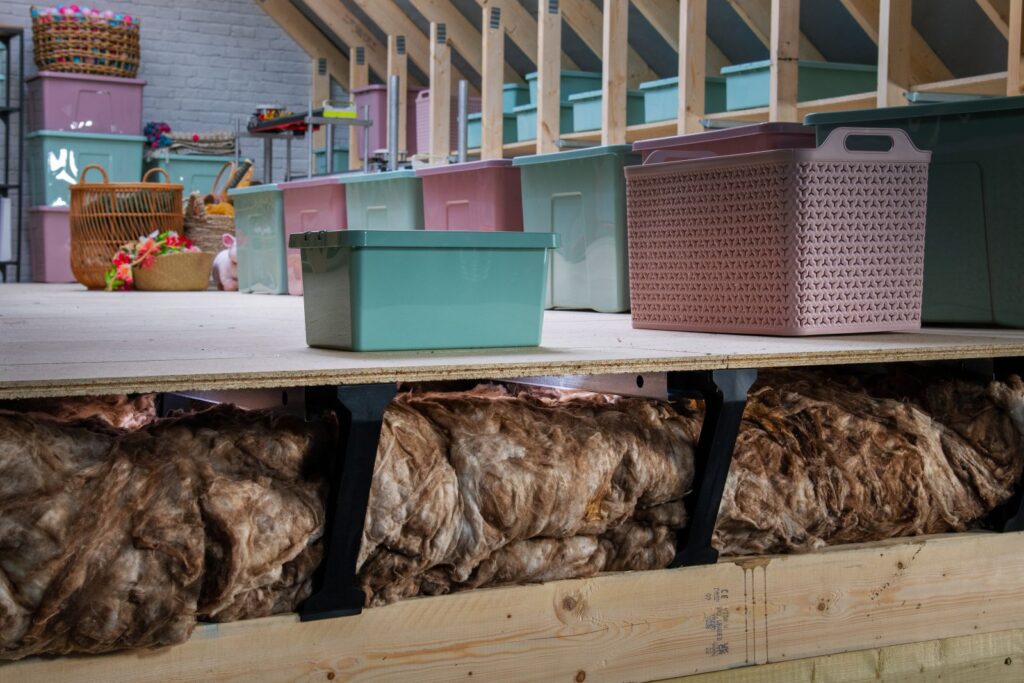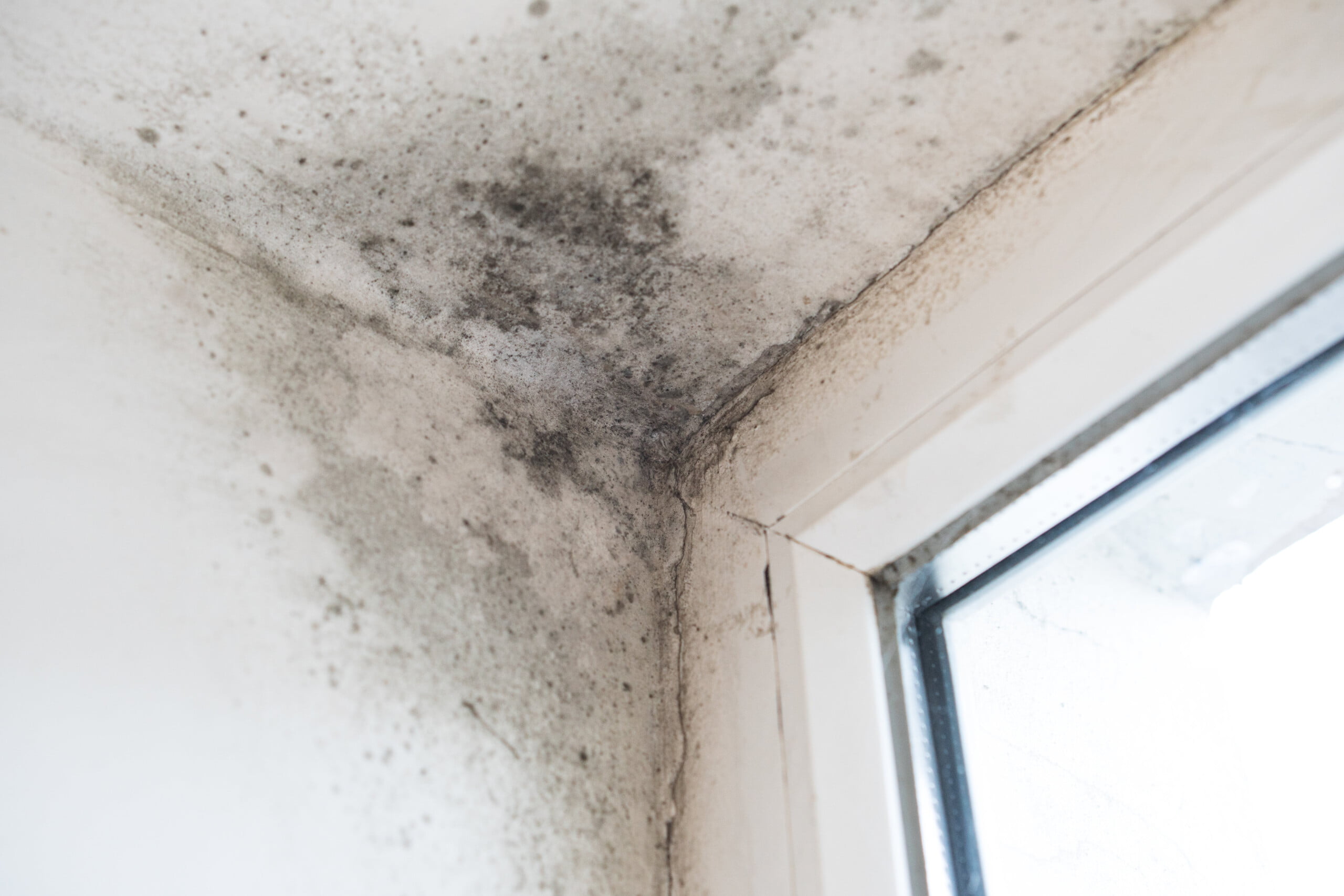Do you have a damp loft? If you do, what can you do about it?
Condensation and excess moisture can build up quickly, especially in the colder months of the year. If the right actions are taken, then a damp loft can be reversed, and the issues can be prevented from happening again. Damp and mould can bring significant risks to your health and when left without treatment, they can rot away at the timber in the roof! So, it’s important to understand the causes so that you know how to prevent or treat any damp issues.
The Physics Of It All
A damp loft is, unsurprisingly, caused by too much moisture. This can come in as rain from outside (if your roof tiles are cracked, guttering blocked, or any lead flashing broken, or if you live near the sea or even on an exposed windy site where the rain gets blown sideways into the loft through the eaves!). But even if there is no rain entering the loft, then moisture will come up from the rooms below the loft, in which case it’s usually as humid air rising up. This humid air will travel through plasterboard ceilings but, more usually, most of it rises up around downlighters, pipework or the loft hatch, or via extractor fans. All human activity creates moisture but key rooms that cause the most humid air are bathrooms and kitchens.
The Signs To Look Out For
Even though condensation and dampness are most common in autumn and winter, there is a chance that throughout the year your loft could be exposed to moisture which will create a damp loft.
The first signs to be aware of are:
– Damp
– Moisture on the inside of any Velux windows
– Black spots on your walls
– Mould spores on items in the loft
– Broken roof tiles (visible from the outside)
– Cracked leadwork
– Leaking pipes and guttering
Once you have identified these signs, you can find the cause / solution of the problem – therefore you can begin to tackle the main issue.
Condensation Caused by Poorly-Installed Loft Insulation
Loft insulation has many benefits from reducing your energy bills and helping the planet, giving you a more comfortable home environment, as well as adding more value to your home.
But poorly-installed loft insulation can limit the ventilation flowing through the loft by blocking the eaves. Your home will be nice and warm, but ventilation is needed to take moist air out of the loft before it forms into condensation. Many insulation installers, especially alas in new build properties, let the insulation block the eaves, or they fail to install other vents, e.g. ridge vents in the top of the loft space.

If you do have condensation in the loft, it’s worth trying to fix the root problem. However if you can’t then installing a natural substance like sheep’s wool will keep your loft eco-friendlier as the wool will be able to absorb any moisture, avoiding the risk of condensation. The loft may however smell like wet sheep!
Condensation Caused by Poorly-Installed Loft Boarding
Warm air rises and this includes the humid air coming up from your home into the loft. If your loft is properly insulated, then the air will cool as it rises but then that means that your loft boards above the insulation will be cool too. And when humid air hits a cold surface it can condense, causing the underside of the boards to become wet.
That’s why we always recommend that you leave an air gap between the top of the insulation and the underside of the boards and why it’s worth knowing that lots of other raised loft boarding products on the market (or simply the use of raised timber battens) often don’t provide this, unfortunately. We’ve seen lots of examples of poor quality loft boarding, where the customer has had to remove these and put in the LoftZone StoreFloor product instead.
How big should the gap be? Well, we paid The Buildings Research Establishment and the British Board of Agrement to calculate this: the BRE said at least 29mm and the BBA said 50mm. But in reality the answer is a how-long-is-a-piece-of-string type of question, as it depends on how much humid air is rising up from below and how much ventilation you have in the loft. If you have a large family frequently using the bathroom, and the seals around your downlights or pipework are poor and let lots of moist air into the loft, then you will need to be doubly careful to leave a decent air-gap between the top of the insulation and the bottom of the boards. On the other hand, if you can feel the wind blowing through your loft, from eave to eave, then you will need less of an air gap between the insulation and the boards than if your loft is in a windless valley and has gaps at the eaves that are very small.
Over-Filling Your Loft
Another cause of condensation, causing a damp loft, can be overfilling your loft with storage.
If your loft is overcrowded, this can also block ventilation. The loft constantly needs breathing space so the air can flow, allowing your home to be warm in the winter and cooler in the summer.
Squashing any insulation will affect its performance (usually reducing it by at least 50%) as insulation works on being fluffy and trapping air inside it. So it’s important to not compress it with floorboards or boxes, in one of our recent blogs: ‘The Dos and Don’ts Of Boarding Over Loft Insulation’, we explain more.
Loft Hatches, Pipework And Down-Lighters
If hatches, downlighters and pipework are installed incorrectly, moist air from the house will be able to get into the loft, which can cause condensation resulting in your home having a damp loft. Having a poorly ventilated loft with the warm air from below rising and hitting cold surfaces can cause damp, mould and rot to form.
You should ideally place downlight covers over each downlight, so that air cannot pass around them. And seal all around the hatch, which should itself be insulated, too.
If you don’t want to do loft work yourself, please use a trusted professional; you can visit this page to see who your local installers are.
How To Treat Condensation
If you are suffering from a damp loft, don’t ignore this issue.
To make sure that your loft becomes properly ventilated, there needs to be a place for the damp air to disperse outside. There are a few ways to achieve this:
– Make sure that the ventilation spaces are clear of insulation or storage boxes.
– Don’t board directly on to the joists as then the warm and humid air rising through the ceiling and insulation has nowhere to go and could condense on the underside of the boards. Leave a sufficient air-gap between the top of the insulation and the underside of the boards, and make sure that this has a path out to the ventilation (usually at the eaves).
– And whilst it won’t create condensation, we don’t recommend compressing your insulation as this reduces its effectiveness by up to 50%.
From here, consider using our LoftZone StoreFloor for an award-winning, fully patented, loft boarding system that is specifically designed for installing flooring over the full depth of your insulation, and for providing sufficient airflow above the insulation and underneath the boards.
It’s the strongest raised loft boarding system available due to its construction of steel and industrial-grade recycled plastic! You will never have to worry about condensation in your loft again, knowing that your insulation is always protected and cared for.
Keep Your Loft Dry With LoftZone
Our team of loft experts are always happy to answer any questions or help you to make the most out of your loft space.
We also have a range of FAQs which can assist you regarding the installation and maintenance of your loft – you may find the answers you’re looking for.
Are the loft boards you sell moisture resistant?
The Supreme loft boards that we sell are moisture-resistant but the others are not. However, if you have a damp issue in your loft then this could affect the whole timber structure so we would recommend that you solve the damp problem before fitting any boards.
Give us a call on 01483 600 304 or drop us a message at sales@loftzone.com.
View our YouTube channel to see LoftZone StoreFloor in action!
